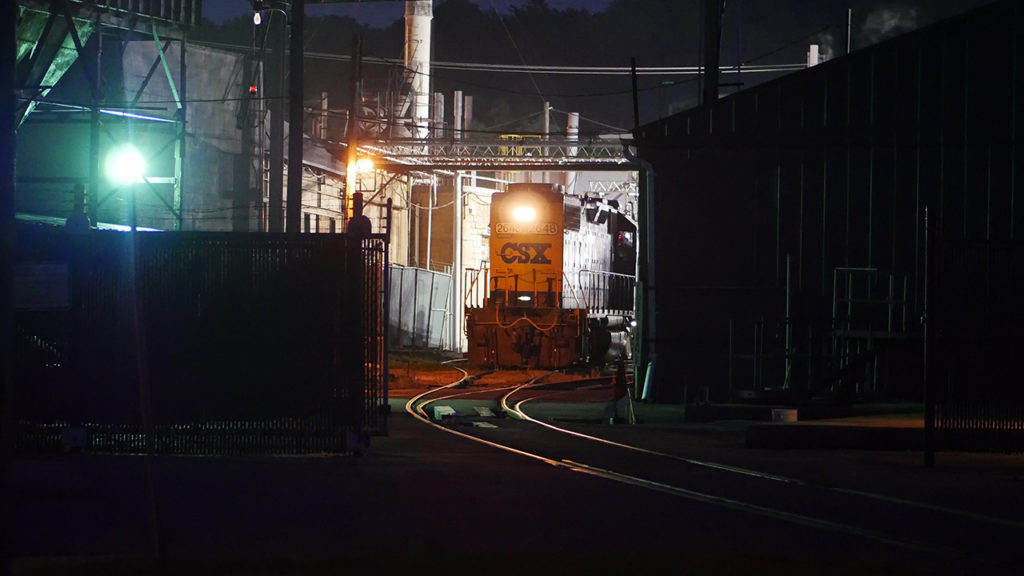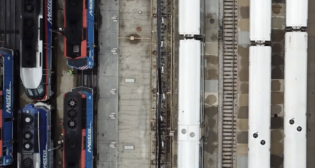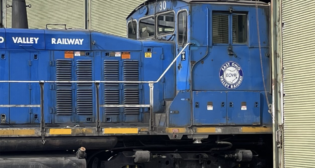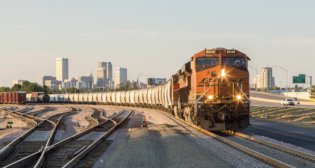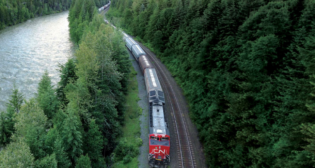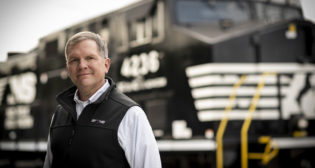
Brighter Days Ahead
Written by William C. Vantuono, Editor-in-Chief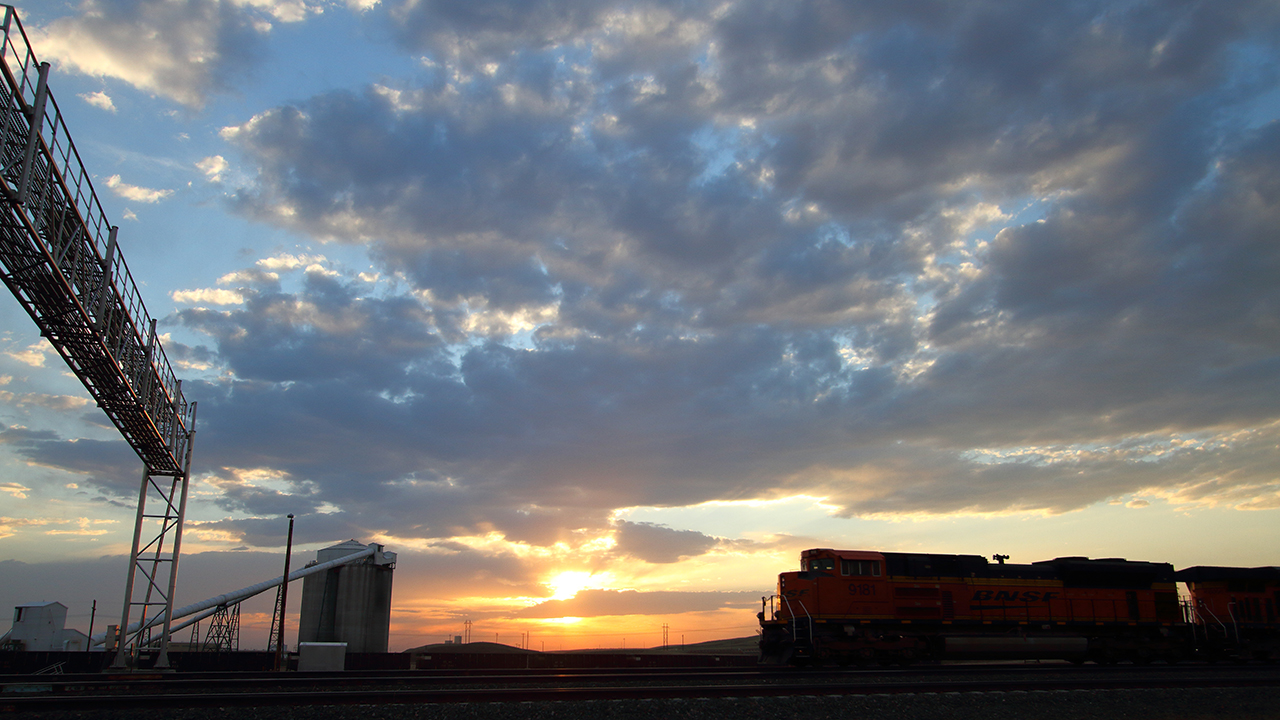
William Beecher photo
2024 FREIGHT RAIL OUTLOOK, RAILWAY AGE DECEMBER 2023 ISSUE: In more ways than one, 2023 was marked by a few dark clouds. In 2024, look for them to scatter, pushed by warmer prevailing winds. (With Jason Seidl and Patty Long)
Resiliency is “the capacity to withstand or to recover quickly from difficulties; toughness.” Resilience, a closely related word, is “the process and outcome of successfully adapting to difficult or challenging life experiences.” Both words describe the railroad industry for the past few years, perhaps especially so for the past 12 months, given all the problems we’ve had to spend considerable time and resources solving. Some may prefer to use challenges, a softer word than problems, but I feel compelled to point out that problems are solved, while challenges are addressed. This is hard work that actually never stops, and is never easy.
To paraphrase President John F. Kennedy’s 1962 address at Rice University, “We choose to be railroaders not because it is easy, but because it is hard. Our long-term goals will serve to organize and measure the best of our energies and skills, because our challenges are ones we are willing to accept, unwilling to postpone, and intend to win.”
We’re not, of course, talking about a manned mission to the moon. We’re talking about operating safely. Growing market share. Competing, while cooperating to better the industry as a whole. Providing excellent customer service. Taking care of our employees. Leveraging advanced technology. Earning a decent return on investment. Improving public confidence in, and understanding of, the important things we do for the global economy. Keeping regulators and politicians off our backs.
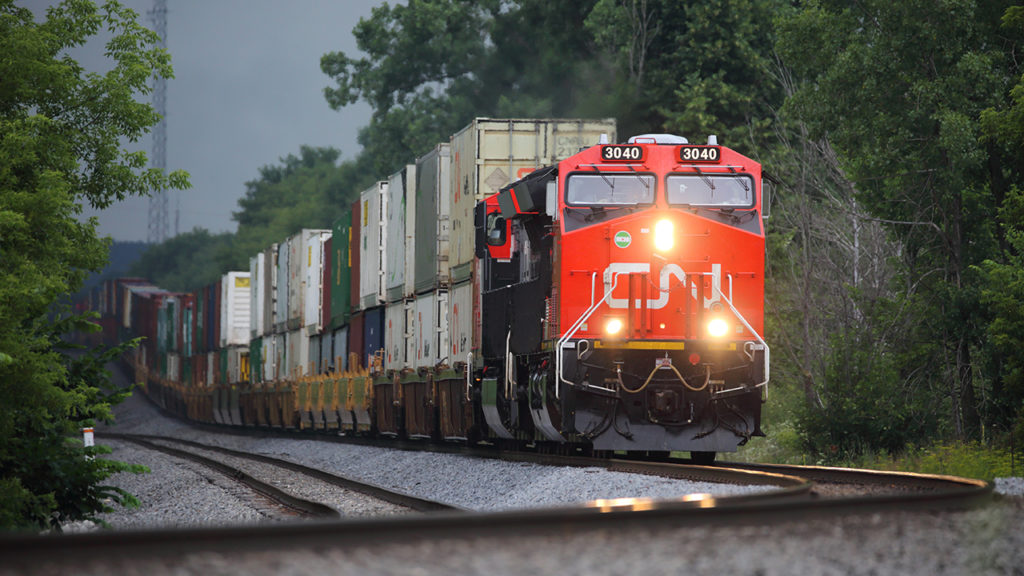
Call me an optimist, because 2024 could very well be the year in which significant strides are made in all these areas. Despite its hardships, 2023 laid the foundation and as such, on balance, was a very good year. We’ve hopefully learned from our mistakes and emerged from some very tough circumstances with knowledge and insight. A new resolve.
“A recent Wall Street Journal article suggests three Goldilocks-like pathways for the economy,” the Association of American Railroads noted last month. “First, current economic momentum is short-lived as households and firms cut back on spending, and firms decide they have too many workers and start laying people off. This creates an economy that’s too cold, and a recession ensues. Second, growth stays strong and inflation rises again, so the Fed hikes interest rates again and raises the risk of a hard landing. This economy is too hot. Third, economic growth stays strong but inflation stays under control. The Fed leaves interest rates alone, confidence grows, everyone is happy. This economy is just right. Unfortunately, right now we don’t know what Goldilocks will find.”
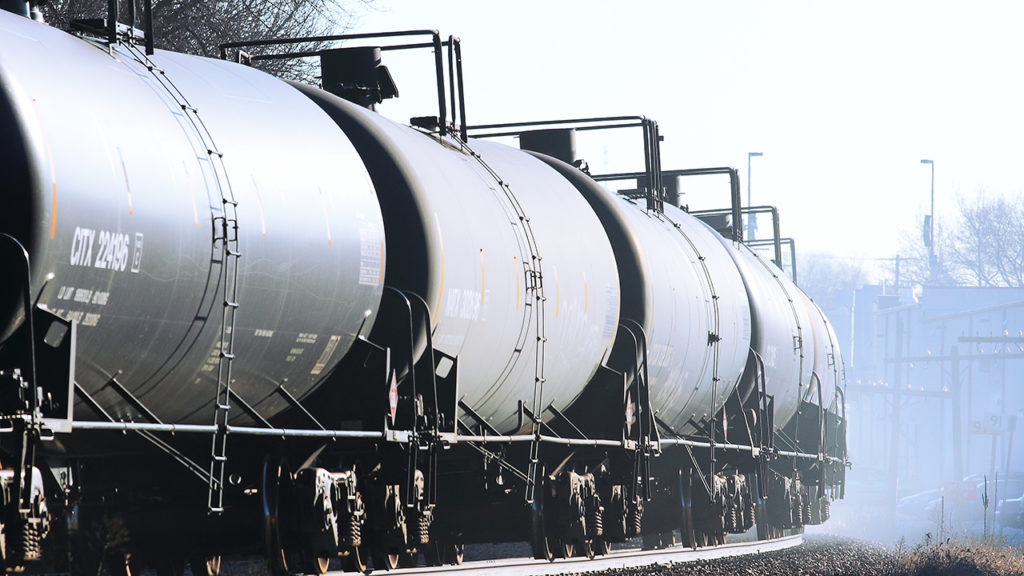
Following are two perspectives on what 2024 could bring. Perhaps things will turn out “just right,” at least for now. Inoltrare!
Winds of Change
By Wall Street Contributing Editor Jason Seidl

Do you feel that wind blowing in your hair (or maybe just across your bare head if you are aerodynamically quaffed like me)? Those are the changes that have been taking place or are about to take place in the rail industry. For the first time in a long time, high-level executives are taking a sober look at service levels, supply chain visibility and overall customer experience. Indeed, we are hearing encouraging language from the C-Suite, and it reminds me of a time 20 years ago when Matt Rose took over at BNSF and started uttering unheard of phrases like “we must earn our cost of capital.”
Specifically, Joe Hinrichs of CSX has been leading the way in pushing change, both at his railroad and the entire industry. His actions even got him named Transportation Person of the Year by NEARS (North East Association of Rail Shippers). From the moment he took over the reins at CSX it felt like his tenure was going to be different as he stressed culture and service from day one, a focus on which he has thoroughly followed through, in our assessment. A former railroad customer himself, Hinrichs has stated that CSX is first and foremost a service provider. He appears to recognize that the industry must improve its service, ease of doing business and supply chain visibility to begin to grow again.
We are also encouraged that, in his first public communication to his rank-and-file membership, Union Pacific CEO Jim Vena stressed growth via service and operational excellence.
It may seem odd to talk about growth in an industry that has not grown volumes at all over the past decade. However, growth is needed for the health of the rail industry over the longer term. Sure, we could see industry volumes grow next year, but it may just be easy year on year comparisons. Longer-term growth may not come easily as the trucking industry will not want to give up some of the gains it has made against their railroad counterparts. Growth will also likely require all the rail industry pulling in the same direction. It appears for the moment the industry is willing to do so as it is clearly saying the right things, but how much rope the investment community is willing to give them remains to be seen. The length of this rope, however, is likely longer than the one the regulators have been willing to give.
The regulators have played a much larger role over the past few years in the railroad industry. Under the leadership of outgoing Chairman Oberman, the Surface Transportation Board (STB) approved the CP/KCS merger, which will likely go down as the last of the big Class I mergers. The STB sought to protect and enhance competition/service with this merger and thus far it seems they have. The rise of new rail services out of Mexico, such as the UP/CN/GMXT Falcon Premium service and a new interchange agreement to reach the southeast with CSX and G&W, are shining examples of enhancing competition and service. The STB also announced its long-awaited proposed rulemaking on reciprocal switching. While it would be a wild stretch to call this a win for the railroad carriers, we believe it could have been far worse as many in the industry were expecting a mileage-based ruling.
The future direction of the STB, however, is in question after the shocking announcement that Chairman Oberman will not seek renomination for a second term. A new Chairperson could be named with board members Primus (who has taken the toughest stances against the rail carriers in the past) and Hedlund the likely choices as they are Democratic nominees. President Biden could also appoint a new board member to take over the role of Chairperson, but the likelihood of that option appears slim in our view given other more pressing domestic and international issues. Indeed, the STB has functioned many times in the past with less than a full slate of members. The length of a replacement will also depend on the outcome of the 2024 elections as a Republican victory would likely change things yet again.
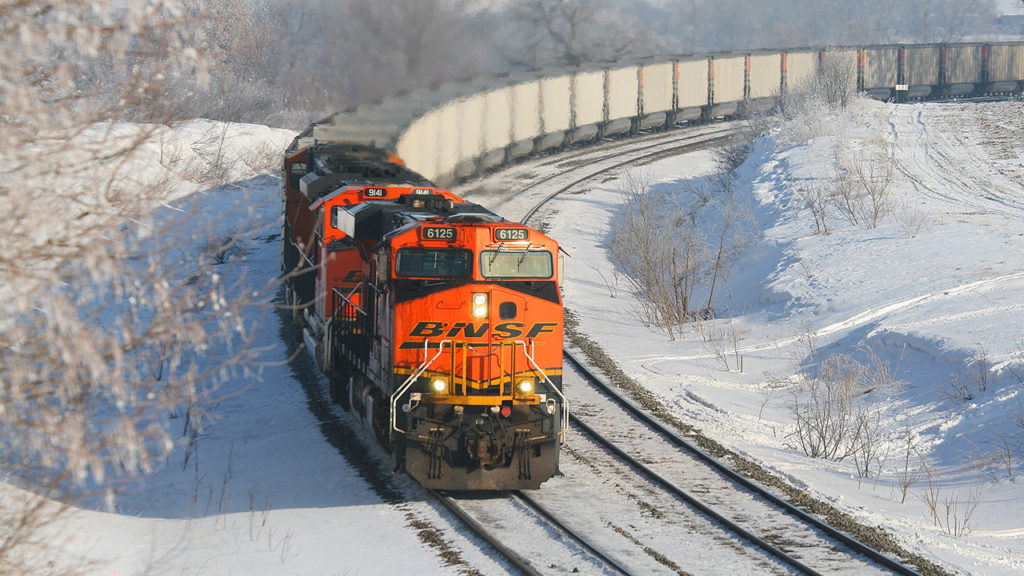
All of this brings us to the financial outlook of the railroad space. Railroad stocks have underperformed in 2023 with all names trailing the broader market and the group falling roughly 4% (albeit largely due to a ~15.5% drop by Norfolk Southern) vs. the SPX (Standards & Poors Index), up ~19% during the same period. Pressure on volumes and pricing have coupled with rising costs, a major derailment and tech issues to limit 2023 financial performance. The carriers have found themselves at the low point of the past two decades in their price vs. cost tradeoff for most of this year. This, however, should change as we move through 2024. First, we are starting to see some inflationary costs abate somewhat.
Second, and more important, the railroads are expected to continue to attack their longer-term contracts as they roll over (recall ~50% of a railroad’s book of business rolls off every year) to account for higher costs.
Finally, it appears that truck pricing has hit a bottom and should have nowhere to go but up. This should help a great deal on the intermodal side, but we expect it to have a larger impact on 2025 results. We believe it is this dynamic that has rekindled long-only investor interest of late. While truckload stocks may react first in the cycle, the railroads should set up really well toward the middle of 2024, in our opinion.
Jason Seidl is Managing Director, Industrials – Airfreight & Surface Transportation, TD Cowen, a Division of TD Securities.
Rail Friends and Foes
By Patty Long
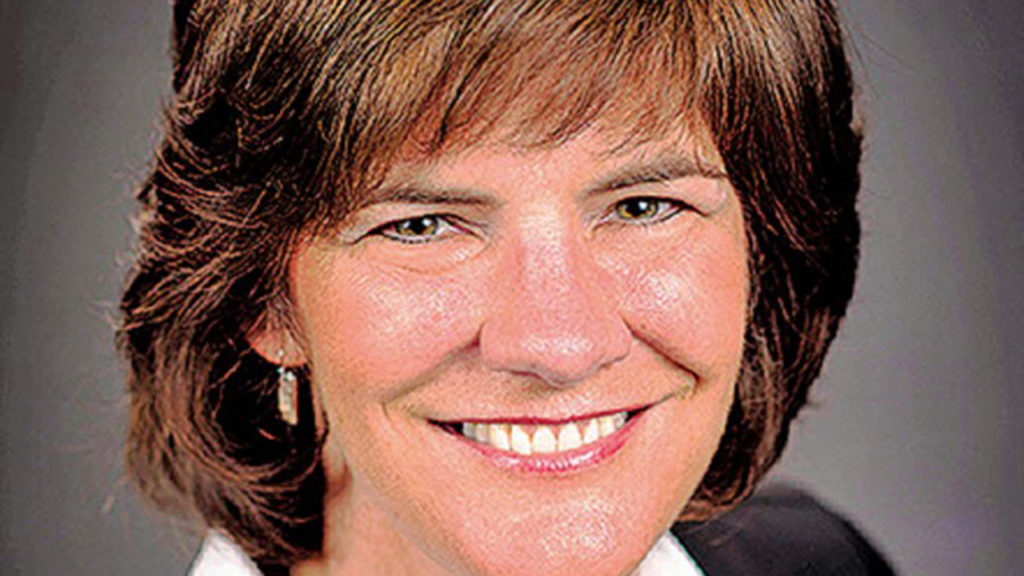
As an advocate for railway suppliers, it is part of my job to understand influences impacting policies and perceptions around the movement of people and goods via rail. Our members develop products and technologies for both!
Lately, I’ve noticed a troubling schism in some Congressional circles that lauds privately owned and funded freight rail for its economic and environmental benefits while disparaging passenger rail as a wasteful use of taxpayer dollars. In doing so, I fear that our “friends” on the Hill are throwing the baby out with the bath water.
The “baby” in this case, is U.S. employment directly supporting rail supply, which in 2020 was an estimated 242,000 jobs and more than 700,000 when you include indirect and induced employment. A year later, a bipartisan majority in the U.S. Congress passed the Investment in Infrastructure and Jobs Act (IIJA) to invest U.S. taxpayers’ dollars to create even more jobs while updating a system that is critical to our country’s economic and environmental health and national security.
Sadly, this once-in-a-generation opportunity is struggling under the weight of extreme inflation, post-COVID ridership declines, procurement delays and in some cases, waste, and abuse that is difficult to defend. But to move forward we must condemn inefficiency and hold organizations accountable while supporting investment in American jobs.
According to the USDOT, an investment of $1 billion in public transportation creates roughly 36,000 jobs. A more tangible example of this is the production of new Amtrak Airo™ trains—manufactured by RSI member Siemens Mobility—that will create new engineering and manufacturing jobs with more than 3,500 parts built by nearly 100 suppliers in 31 states. This illustration and others like it must find their way into the mainstream media. But it is no secret that negative examples sell more papers and produce more clicks, particularly in years that are divisible by 4.
As we head into an election year, I caution our legislators to avoid the easy sound bites and finger pointing as it relates to funding of passenger rail. Rather, I invite them to work with us on the serious business of fixing systemic issues that can and should be addressed. Procurement reform to address implementation delays is not a sexy campaign topic, but it will yield real benefits for real people in manufacturing towns across the United States.
As representatives of both freight and passenger suppliers, the Railway Supply Institute, is working to help small manufacturers navigate difficult issues related to Buy America and domestic preference laws. These complexities create barriers to entry limiting what should be a healthy and robust supply chain. This past spring, we worked with government agencies to address inflation adjustments for firm-fixed price contracts that were driving small suppliers out of business or into other industries. And, through our training, best practices and standards development, we are helping to connect small businesses with large customers who need their services.
We have an even greater potential for growth in uniting and aligning with other stakeholders—engineering and construction firms, state governments and labor unions—all of whom have a vested interest in system reform and the potential it provides for real job creation. At Railway Interchange, we brought all of these groups together for a candid discussion about how our organizations can and should be working together.
But we need our elected official on board! This summer, the RSI and a half dozen of our members hosted an event on Capitol Hill to showcase the technological innovations that are making the rails safer, greener and more efficient. More importantly, we started a dialogue about how they—both the Congress and Executive branch—can and should support that investment.
At the end of the day, we all want the same things: efficient and productive use of the taxpayers’ dollars to support our nation’s infrastructure in a way that encourages investment and creates good jobs. Together, we can connect the dots between funding and jobs, hold organizations accountable and fix what is truly broken.
Patty Long is President of the Railway Supply Institute, which connects members to their customers and partners, advocates on behalf of freight and passenger railway suppliers in the legislative and regulatory process, and advances safety, innovation, technology and sustainability in the industry.
